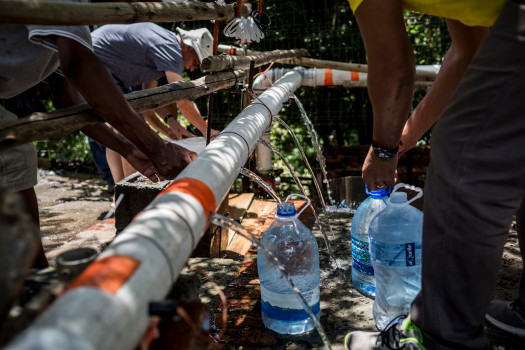
Research conducted by Wesgro has revealed how Cape Town is now setting a new world-class standard for reduction in water consumption.
According to the latest data released by the City of Cape Town, the city is now using 516 million litres of water per day. In February 2015, the city was using 1.2 billion litres of water a day. In only 3 years, the City has therefore reduced its consumption by more than half.
Currently, average residential consumption is approximately 87 litres per person per day, down from 209 litres in February 2015; and total consumption (including commercial, industrial, and government) is currently at approximately 124 litres per person per day, down from 298 litres in February 2015. This is a reduction in water use of almost 60%.
In comparison, during its “Millennium Drought”, it took the city of Melbourne 12 years to achieve a similar percentage reduction. However, even at its lowest point its total municipal water consumption was 246 litres per person per day, in total, 984 million litres per day, and daily residential consumption approximately 147 litres per person.
Similarly, the US state of California experienced a severe drought between 2012 and 2017, with the greatest drop in consumption during 2015. According to the California Environmental Protection Agency, between November 2013 and November 2015 (winter months), residential consumption per person per day was reduced by 20.2% from 360 litres per person per day, to 286 litres per person per day. During the summer months, residential water consumption per person per day reduced from 521 litres per person in August 2013 to 387 litres per person per day in August 2015. This was a saving of 27%.
Furthermore, according to the International Benchmarking Network for Water and Sanitation Utilities, São Paulo reduced its total water consumption from 212, 31 litres per person per day in 2012, to 167.5 litres per person per day in 2015. This saving equates to 21%. This after they also experienced a devastating drought.
Wesgro CEO, Tim Harris said that this data tells a good story about how Cape Town is setting international best practise in reducing water consumption and becoming more water resilient. “The very severe drought in the Cape has legitimately been a cause of concern both at home and abroad. But there is another, even more compelling story, which is starting to emerge on the back of it. This is the story about Cape Town’s remarkable reduction in water consumption, which is likely unmatched by any other city in the world during such a short period. This reduction is world-class in its own right, and is now setting the benchmark for countries around the world. This is good news for investors and visitors alike. A resilient destination is one that is more appealing for tourists, and for businesses looking to invest. Wesgro will be sharing this positive story on all our missions, because our people’s character during difficult times is perhaps one of best selling points.”
GreenCape, which is providing technical drought support to businesses and government, has been creating case studies to capture the water resilience journey of businesses and industry across the City. Mike Mulcahy, GreenCape’s CEO, says “what we are seeing is climate adaptation and resilience building in action. Businesses and industry across the board are taking big steps to become more water resilient, which are fundamentally transforming the way businesses operate, manufacture and even think about water.”
“For instance, GlaxoSmithKlein in Cape Town has reduced its municipal water consumption by 42% between 2010 and 2016, by reusing wastewater from two reverse osmosis plants. The Rabie Group in Cape Town, one of South Africa’s largest construction companies, now only uses potable municipal water for hand washing and drinking on construction sites – treated effluent is used for everything else, including for cleaning, mortar and compaction. These are just two of a plethora businesses and industry taking action, which in turn are creating a wide range of opportunities for investors in the water space.”
Executive Deputy Mayor of Cape Town, Ian Neilson, said “In the past year alone, we have seen a reduction in consumption of 400 million litres of water a day. This is as a result of residents’ savings efforts, as well as the City’s interventions to reduce consumption. These include the implementation of more stringent water restrictions, the phased roll-out of pressure management across the city, and the installation of water management devices to limit the consumption of high water users. We are also looking at ways to diversify our water supply in order to be more resilient to drought conditions in future. With climate patterns becoming more unpredictable, we can no longer depend on steady winter rainfall levels to replenish our surface water. We will therefore be augmenting our surface water supply with temporary and longer-term desalinations projects, groundwater abstraction and water re-use. Regardless of these efforts, however, we must accept that we can no longer consume water as we did in the past. Sustaining a significantly reduced level of water consumption must become our ‘new normal’.”
Western Cape Minister of Economic Opportunities, Alan Winde concluded: “I believe in years to come, people will look at the example Cape Town has set in reducing our usage and use the city as an example that they can learn from. As we head into the ‘new normal’ we need to create resilient businesses which are able to withstand shocks so that we can continue to grow our economy and create jobs”.

